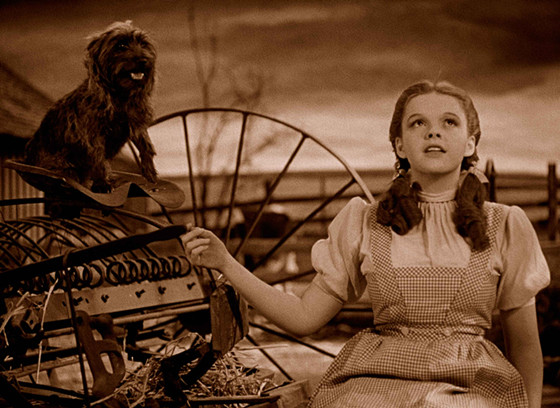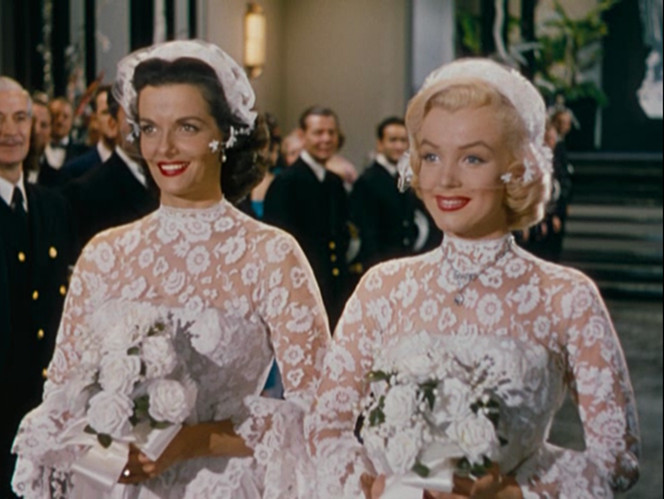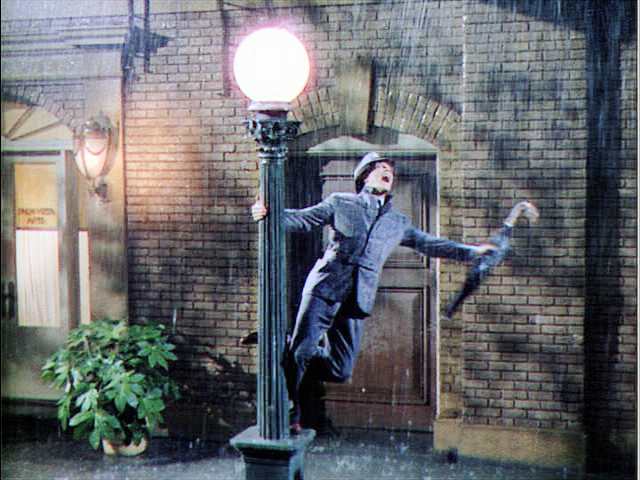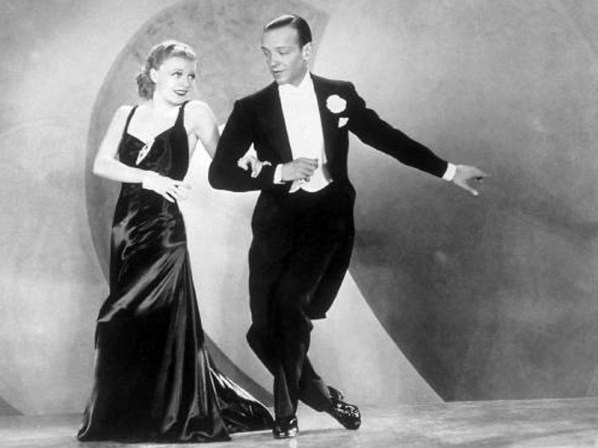5. The Wizard of Oz (1939)

The Wizard of Oz makes a strong case for being the most enduring film of all time. Few pictures have worked their way into public consciousness quite like Dorothy’s adventures in the fantasy land of Oz, teaching generations of kids that there’s no place like home, and spawning spin-off musicals and films in the process.
It was a ground-breaker, bold in its use of Technicolour, bringing to life a fantastical world of wonder and magic previously limited to the imagination only. Few scenes in fantasy cinema have quite the same visceral effect as Dorothy first stepping through that door, out of the drab black-and-white world of Kansas and into the luminous colours of Oz. MGM’s production design is marvellous, so vibrant and ambitious for its day. And the characters who populate their fairy-tale are just as wonderful, each brought to life with charismatic performances, especially from the women of the story.
Judy Garland confirmed her transition from child-sensation to bona fide movie star, playing the down-to-earth Dorothy with wide-eyed wonder as the magic unfolds before her. Margaret Hamilton is the film’s other standout performer. Her turn as the sinister Wicked Witch of the West remains the benchmark for cinematic witches, donning all black that clashes with her slime-green skin, shrieking and pointing her clawed fingers like she was born for it. It’s one of those rare classic films where every scene feels like an iconic moment, every line a memorable movie quote.
And music runs throughout the land of Oz too. Herbert Stothart’s Oscar winning score connects the various magical encounters with timeless tunes that can be light-hearted and melancholy in equal measure. ‘Over the Rainbow’ is the obvious classic. It’s Judy Garland’s career-defining moment on screen, and one of the most significant musical moments in the history of cinema. Its popularity remains more than eight decades on and is often said to be one of the most covered songs of all time. Other catchy melodies like ‘Ding-Dong! The Witch is Dead’ and ‘We’re Off to See the Wizard’ are just as engrained in pop culture, and ‘If I Only Had A Brain’ is perhaps the most famous comedy musical number on this list. No film endures for this long by accident.
4. Gentlemen Prefer Blondes (1953)

Howard Hawks dipped his toes into all sorts of genres throughout his career, and musicals were no exception. In a filmography littered with classical, masculine dramas, Gentlemen Prefer Blondes and its lavish campiness stands out all the more. And in typical Hawks fashion, he pulls it all off with a strong sense of his characters’ personalities and friendship. Marilyn Monroe and Jane Russell shine as one of cinemas most indomitable duos, providing endlessly amusing comedy to go along with some wonderful musical sequences.
Monroe was never better than as the diamond-crazed showgirl Lorelei Lee. Her comedic timing and sultry sarcasm are on full display in every scene. At first glance she seems typecast once again as the familiar attractive, ditzy blonde. But while Lorelei may appear to be featherbrained, she’s much cleverer than she is given credit for, manipulating and manoeuvring the gawking men around her with delicate ease. Opposite her, Jane Russell’s sharp-tongued, witty Dorothy Shaw is the perfect counterbalance to Lorelei’s kind nature and optimism. Wily and no-nonsense, Russell exudes palpable confidence, and always stands up for her best friend. Theirs is a wonderful friendship to just sit with for ninety minutes, warm and funny and genuinely supportive. That they both look incredible, always draped in some spectacular, eye catching costumes, is simply a bonus.
Howard Hawks unashamedly makes these two actresses the star of every scene, littering the world around them with hilariously inept men. His control of the story is impressive, paced wonderfully with musical numbers blended near seamlessly. The songs themselves are a delight, all building up to the famous ‘Diamonds Are a Girl’s Best Friend’ number. Outside of subway grates, it’s probably Monroe’s most iconic screen moment, and Hawks stages the whole sequence wonderfully.
Few images in classic Hollywood are quite as memorable as Marilyn in that pink dress and gloves, a fulfilled smile on her face, surrounded by well-dressed suitors and glistening diamonds galore. Touches of romance are woven into the story of opportunistic gold-digging, subverting a lot of the typical genre cliches common at the time. And with two of the best comedy performances the decade had to offer, Hawks’ film still stands tall among the best musicals of all time.
3. Singin’ in the Rain (1952)

It’s hard to think of a film that better encapsulated everything that made Golden Age musicals so great. Charming performers, lively dance numbers, and an insatiable appetite for a good time make it near impossible to dislike, and it regularly features as one of the most popular classic films of all time.
Even decades on, Singin’ in the Rain remains the gold standard for films about Hollywood. Every moment of this glorious musical is infused with adoration for the art of moviemaking, as it alternately celebrates and pokes fun at the industry’s past and present. Directors Stanley Donen and Gene Kelly take so much pleasure in pure entertainment, the joy the movies bring, the technical innovations that made the magic happen. It may not be the most revolutionary musical, sticking to the well-worn tropes of the time, treading warm, familiar ground. Yet the story is just overwhelmingly enjoyable, and those tropes are executed near perfectly every time. It’s an absolute pleasure to sit through every time – few runtimes fly by as quickly.
In keeping with the adoration for cinema’s history, even the music is literally recycled tunes from the MGM vault. But Kelly and co. breathe new life into the old. All the songs are catchy, every routine mesmerising. Kelly’s titular solo number is the obvious highlight, but ‘Good Morning’, ‘Moses Supposes’ and ‘Broadway Melody Ballet’ just as remarkable. For his part, Kelly was never better. He totally convinces as a Fairbanks-like star, as dashing and honourable as the rogues he plays on screen. His expressive face just lights up the frame, through every soaring high and sombre low. And his dancing borders on flawless. Whether solo or alongside Donald O’Connor, his best on-screen partner, Kelly dances his most famous routines with passion and precision.
O’Connor is just as impressive as the icon next to him. He’s able to keep up with Kelly beat-for-beat, and more than lives up to his word with ‘Make ‘Em Laugh’. It’s one of the great comedic side-kick performances; he frequently hijacks a scene, grabbing most of the good lines and all the best gags. Debbie Reynolds and Jean Hagen round out one of the most easily entertaining musicals casts there is. Their chemistry is effortless, so it doesn’t feel at all jarring when the tone shifts, and the relentless comedy is paused for a moment of tender romance. Few films come together this smoothly, let alone with as much energy and excitement. It’s a short list of musicals that can compete with this all-timer.
2. Top Hat (1935)

It’s hard not to admire Hollywood’s output in the 1930s. Films were being made for an audience living through the effects of the Great Depression, with the intention of doing one thing and one thing only – cheering people up. Cinemagoers were looking for escapism, a fantasy trip into a version of reality where everything always works out in the end. Of all the stars of the time (and MGM claimed to have quite few) none captured that magic quite like Fred and Ginger, and never better than in Top Hat.
Fred and Ginger’s romantic-comedies tended to stick to the same tried-and-tested formulas. Prickly tensions give way to tender longing, amusing side characters trip over their words and cause confusion, shenanigans ensue, and spectacular dance sequences speak the words the characters can’t. Top Hat was the first of their ten films together to be written with the duo in mind, and stands as a perfect encapsulation of what makes their films so joyous. Song after song, dance after dance, character after character, punchline after punchline; Top Hat provides glorious movie magic in 100 minutes of pure escapist joy.
The famous stars just glide across the screen, making the most precise moves look easy as they spin and tap through Irving Berlin’s wonderful music. And when they’re not entertaining you with their dancing, they’re cracking you up with the film’s hilarious comedy. In every scene their chemistry is perfect, and it’s not just them – every character is charming, each full of amusing lines and great comedic timing.
With ‘No Strings’, ‘Isn’t This a Lovely Day’, and ‘Top Hat, White Tie and Tails’, it has some of the duo’s most delightful toe-tappers, while ‘Cheek to Cheek’ provides us with their most iconic dance, a whirlwind of class and feathers. Director Mark Sandrich has total control over the story, staging slapstick comedy, heart-warming romance and intricate dancing with equal aplomb. It’s an absolute joy to watch, and more than 85 years after it was made it remains one of the greatest musicals ever produced. There is perhaps no finer distillation of the musical comedy formula, setting a benchmark that all the other films on this list would be looking to match in the subsequent decades.
1. West Side Story (1961)

Musicals have often been regarded by detractors as a triumph of style over substance. They often skirt daintily around issues of class and gender, addressing such things obliquely if at all. In 1961, one musical really challenged this. Based on the hit 1957 Broadway production, West Side Story is about as mature and hard-hitting as Hollywood musicals get. It taps into important social issues of the time – gang violence, racism, increased immigration and working-class masculinity.
Shakespearean tragedy provides the outline for a modern parable that blends the romance of Romeo and Juliet with a pointed examination of cultural difference, abuse of power and xenophobia in contemporary America. In a highly stylised modern urban setting, even shooting on the streets of New York City, it bridges the gap between escapism and grounded storytelling. Though it never pretends to be realism, through the singing and dancing it expresses the pent-up frustration and rage of alienated youth.
The original Broadway director and choreographer Jerome Robbins was entrusted with the film, and pushed his cast to the limit as he brought about some of the most creative, ambitious dance sequences ever put to film. Robert Wise was the experienced Hollywood head, brought in to capture the gritty nature of the story. They collaborated to create a musical like few others; vibrant and energetic, dark and passionate, equally captivating whether it’s a musical or dramatic scene. (Robbins was actually fired halfway through production, but he remained in contact with Wise and his choreography was left untouched.)
The cast they had to work with are terrific, with charming performances in even the smallest roles. Surprisingly, Natalie Wood and Richard Beymer as the young star-crossed lovers give the most pedestrian performances. But every other corner of the world is filled with personality, including two Oscar winning turns from Rita Moreno and George Chakiris, as well as Tucker Smith, Tony Mordente, Ned Glass and Simon Oakland, all shining as an assortment of juvenile delinquents and frustrated adults.
The music of Leonard Bernstein, with lyrics by Stephen Sondheim, is translated from stage to screen without much meddling, and the few changes that are made (mostly just to the order of songs) work better anyway. The whole thing is a masterclass in musical storytelling, expressing conflict and harmony with the very notes of the music as much as with dialogue and lyrics.
From the opening ‘Prologue’, it’s memorable number after memorable number. ‘Jet Song’ is boisterous, brimming with camaraderie and brotherhood, ‘Dance at the Gym’ an eclectic mix of so many different styles and moves. ‘Maria’ taps into the wistful romance of the story, ‘Tonight’ the uncontrollable love and desire at the heart of it all, while ‘Somewhere’ softly reminds you of the heartbreak you know is coming. ‘Gee, Officer Krupke’ is one of the great musical comedy routines, while ‘Cool’ highlights the dark aspects of the story. Set in a closed off car park, it’s five minutes of fast, emotional dancing, expressing all the pain bubbling away within these characters.
And of course, there’s ‘America’, a song that blends Latin music with lyrics that celebrate the possibilities of life in America, played out in a delightful back and forth by Moreno and Chakiris. The sequence is an explosion of Hispanic rhythms and instruments, and features some of the greatest dancing you’re likely to see on screen. In fact, that could be said for quite a few of the sequences, so amazingly varied is the choreography and music.
It’s truly a landmark film; a box-office smash that earned a whopping ten Academy Awards, including Best Picture, and the first time the Best Director award was shared between two individuals. Steven Spielberg has a remake in the pipeline for late 2021, which only really makes you wonder why anyone would even want to remake such a classic in the first place. Even with Spielberg behind the camera, it’ll have a tall task to come anywhere close to the level Robbins and Wise achieved.